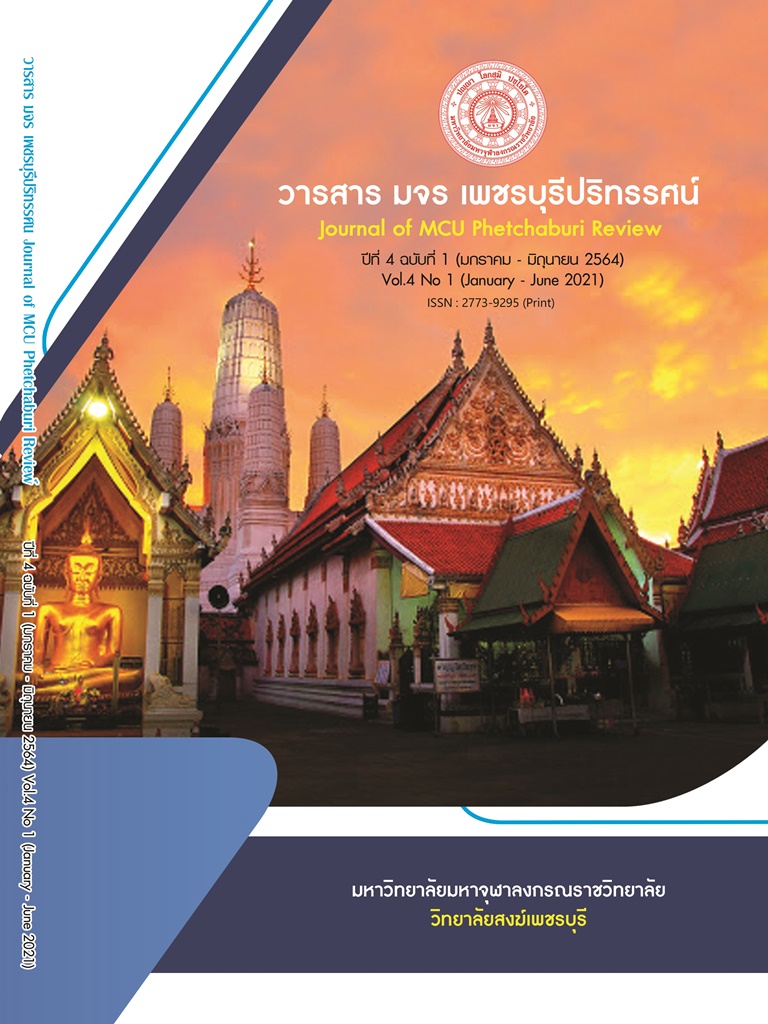EXTENSION OF BULL FIGHTING BREEDS IN THE COMMUNITY: A CASE STUDY NONG PHENG KRO COMMUNITY SUEA HUENG SUB-DISTRICT CHIAN YAI DISTRICT NAKHON SI THAMMARAT PROVINCE
Main Article Content
Abstract
The objectives of this research article were to Study the Expansion of cattle breeds Problems in breeding cattle and methods for promoting the breeding of butt bull breeds in the community: a case study: Nong Peng Kro community, Sua Hueng sub-district, Chian Yai district. Nakhon Si Thammarat Province Use a qualitative research methodology. The primary informants were ten people who propagated the buttocks in the Nong Peng Kro community for the Wua Chon camp in the Sue Hueng sub-district. The secondary informants were the promoters. And supporting the expansion of butt-cow breeds in the community for six people. Analyze the facts from the information obtained. The results of the research were as follows: 1) Expansion of butt-cow breeds in the community. The steps are as follows: 1.1) Selection of butt-cow breeds. There are specific characteristics according to the textbook of good butt cows. 1.2) There are two methods of propagating the buttock breed: natural hybridization. And artificial insemination patterns 1.3) Cow butt raising, it was found that the steps started from taking the cows to exercise, drinking water, bathing, bringing the cows to dry in the sun, practicing soil thrusting, and drying the night dew. And sleeping with mosquito nets, etc. 2) Problems in the expansion of the butt-cow species in the community It was found that there were several problems as follows: 2.1) Confidence problems such as calves that did not meet the desired characteristics 2.2) Breeding problems It was found that cattle breeding was complex. The quality of semen must be selected. 3) Approaches to promoting the expansion of butt-cow breeds in the community found that there were guidelines for promotion 3.1) there were guidelines for promoting occupations in the community 3.2) there were guidelines for promoting the breeding of weed breeders 3.3) there were guidelines to promote the expansion of 3.4) There is a way to pass on knowledge from generation to generation.
Article Details

This work is licensed under a Creative Commons Attribution-NonCommercial-NoDerivatives 4.0 International License.
References
จรัญ จันทลักขณา และผกาพรรณ สกุลมั่น. (2543). วัวชนกับคนใต้. กรุงเทพมหานคร: สถาบันสุวรรณวาจกกสิกร มหาวิทยาลัยเกษตรศาสตร์.
ปนัดดา ทองศรีจันทร์. (2557). ชนวัว - วัฒนธรรมภูมิปัญญาภาตใต้. เรียกใช้เมื่อ 13 พฤษภาคม 2564 จาก https://sites.google.com/site/looknampattalung /phumipayya-ni-dan-kila-kar-la-len/chn-waw
ปานฉัตร อาการักษ์ และ กัสมา กาซ้อน. (2560). ความเสี่ยงจากการลงทุนและปัญหาของผู้เลี้ยงโคเนื้อ ตำบลแม่ข้าวต้ม อำเภอเมือง จังหวัดเชียงราย. วารสารบัญชีปริทัศน์ มหาวิทยาลัยราชภัฏเชียงราย, 2(มกราคม-มิถุนายน 2560), 63-74.
พระราชบัญญัติป้องกันการทารุณกรรมและการจัดสวัสดิภาพสัตว์. (2557). ราชกิจจานุเบกษา เล่ม 131 ตอนที่ 87 ก หน้า 4 (26 ธันวาคม 2557).
ไพศาล ริ้วธงชัย และคณะ. (2548). การศึกษาแนวทางการเลี้ยงวัวด้วยภูมิปัญญาชาวบ้านเพื่อสร้างเศรษฐกิจชุมชนบ้านนาเปอะ ตำบลชาติตระการ อำเภอชาติตระการ จังหวัดพิษณุโลก. กรุงเทพมหานคร: สำนักงานกองทุนสนับสนุนการวิจัย.
มงคล เตชะกำพุ และสุพิชฌาย์ แก้วมา. (2560). วัวชน วัฒนธรรมแดนใต้ มุมมองของนักวิชาการด้านระบบสืบพันธุ์. เรียกใช้เมื่อ 13 พฤษภาคม 2564 จาก http://www.inewhorizon.net/southern-culture/
รงค์ บุญสวยขวัญ. (2559). การเมืองของการพนันวัวชนภาคใต้. วารสารมนุษยศาสตร์และสังคมศาสตร์ มหาวิทยาราชภัฎสุราษฎร์ธานี, 8(2), 20-30.
ศศิธร บุญคงแก้ว. (2561). ระบบการเลี้ยงวัวชนในภาคใต้. กรุงเทพมหานคร: ศูนย์วิจัยและพัฒนา การผลิตกระบือและโค สถาบันสุวรรณวาจกกสิกิจฯ มหาวิทยาลัย เกษตรศาสตร์.
สมกมล ศรีสมโภชน์. (2556). วิถีชุมชนคนเลี้ยงวัว จังหวัดสุราษฎร์ธานี:กรณีศึกษาอำเภอพระแสง และอำเภอเวียงสระ จังหวัดสุราษฎร์ธานี. วารสารสหวิทยาการวิจัย: ฉบับบัณฑิตศึกษา, 2(1), 222-239.
อาคม เดชทองคำ. (2543). หัวเชือกวัวชน. (พิมพ์ครั้งที่ 1). กรุงเทพมหานคร: สำนักงานกองทุนสนับสนุนการวิจัย.


